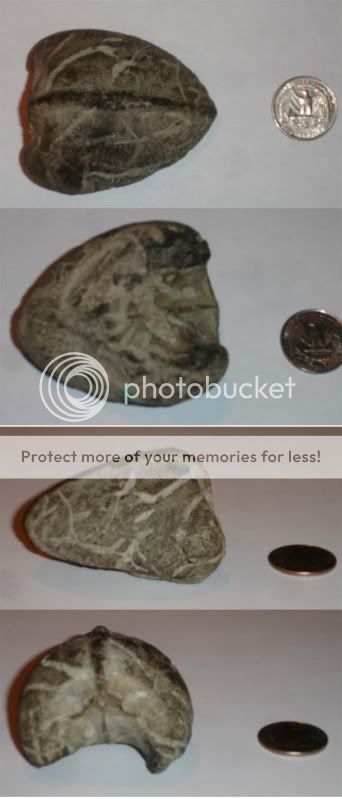SCMDing
Full Member
Hey there Tnet'ers.
My wife has a student who asked if she knew anything about a "fossil" she had. My wife brought it home to me to figure out what it is. Of course, she thinks I am smart when it comes to these sorts of things, but in reality, you are my secret weapon!
At first glance, it almost looks like a poured mold, but looking closely, you can see that it is not. I also notice that there is a modern green dot on it which leads me to believe it may have been in some sort of rock/fossil store. I have seen where they have marked geodes this way. You can see it on the bottom of the second picture.
So here is a picture, let me know what you think. I am probably going to document how I found out what it was, and make it a teaching moment for this student so that in the future she may be able to research it on her own. Thanks in advance.

My wife has a student who asked if she knew anything about a "fossil" she had. My wife brought it home to me to figure out what it is. Of course, she thinks I am smart when it comes to these sorts of things, but in reality, you are my secret weapon!
At first glance, it almost looks like a poured mold, but looking closely, you can see that it is not. I also notice that there is a modern green dot on it which leads me to believe it may have been in some sort of rock/fossil store. I have seen where they have marked geodes this way. You can see it on the bottom of the second picture.
So here is a picture, let me know what you think. I am probably going to document how I found out what it was, and make it a teaching moment for this student so that in the future she may be able to research it on her own. Thanks in advance.









